Before you begin your Bonavista Biennale tour, download the site map here.
Internet is not available everywhere on the Peninsula.
Internet is not available everywhere on the Peninsula.
| 1 |
Keels Bay, Keels |
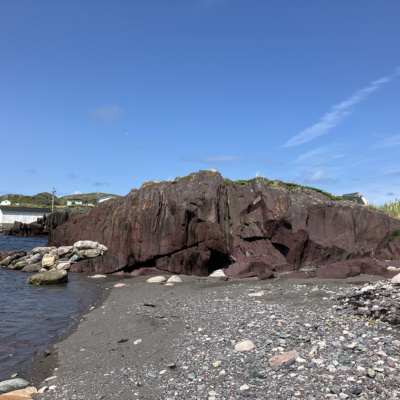
| 1 |
Keels Bay, Keels |
|
Hours |
Accessibility This site can be partially viewed from the road, but is best accessed on foot. Park at Mesh’s General Store (gravel lot) and walk behind the building and down to the small beach. |
20 Main Rd, Keels
Situated behind Mesh’s General Store in Keels, this small beach on Keels Bay is used by locals to launch their boats. The Bay displays Keels’ unique slate rock deposits.
| 2 |
Maudie’s Tea Room at Mesh’s General Store, Keels |
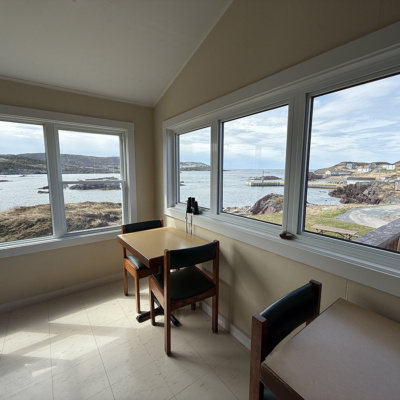
| 2 |
Maudie’s Tea Room at Mesh’s General Store, Keels |
|
Hours |
Accessibility Wheelchair accessible cafe from gravel parking lot; wheelchair accessible washroom available. |
20 Main Rd, Keels
The Hubert and James Mesh Store in Keels is a long running family business, supplying groceries, household supplies, knick-knacks and mail to the community. In 2015, the store was used as a set for the feature film Maudie (a biopic on Maude Lewis, the late Nova Scotian folk painter), and was renovated to look like a small-town store from the 1930s. Selby and Eileen Mesh opened Maudie’s Tea Room in 2018, serving homemade refreshments.
| 3 |
Community Hall, Keels |
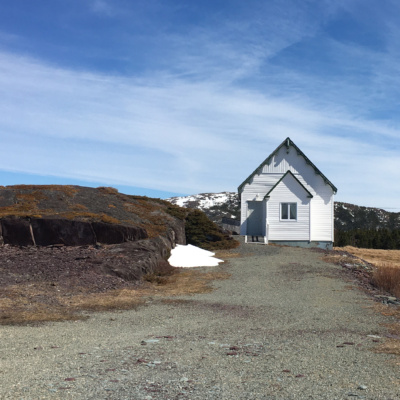
| 3 |
Community Hall, Keels |
|
Hours |
Accessibility Public washroom available. |
6 Church Road, Keels
This structure was originally built in the mid-1800s as a one room school, which closed in the mid-1950s. It was revived in the mid 1970s when Keels Catholic Women’s Association recieved funding to make it viable as a community hall. Today, it functions as a multi-use gathering space, hosting celebrations, funerals, and get-togethers.
| 4 |
Pat Murphy’s Meadow, King’s Cove |
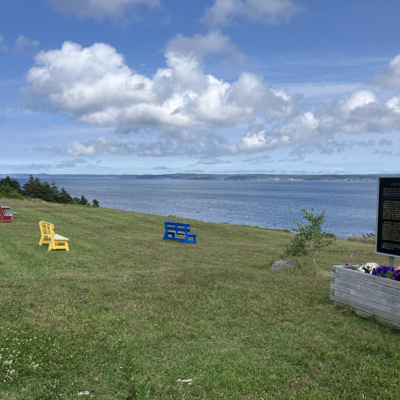
| 4 |
Pat Murphy’s Meadow, King’s Cove |
|
Hours |
Accessibility This site is only accessible by foot. Park by the Roman Catholic Church / entrance to King’s Cove Lighthouse Trail, and walk ~3-4 minutes down the gravel path. |
Lighthouse Trail, King’s Cove
Pat Murphy’s Meadow was the inspiration for a well-known Newfoundland folk song of the same name. The song was written by J. M. Devine, a resident of King’s Cove, who used to mow the meadow for Pat. Today the meadow provides a beautiful place to rest overlooking the waters of King’s Cove along the Lighthouse Trail, a 3.5 km hike.
| 5 |
King’s Cove Community Hall, King’s Cove |

| 5 |
King’s Cove Community Hall, King’s Cove |
|
Hours |
Accessibility Public washroom available. |
1 Mill Path, King’s Cove
This building was recently renovated to serve the residents of King’s Cove as a community gathering place. The site includes a raised bed community garden and freshwater swimming hole.
| 6 |
Ryan Premises Salt Store, Bonavista |
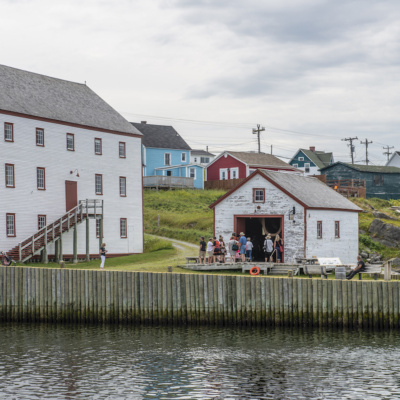
| 6 |
Ryan Premises Salt Store, Bonavista |
|
Hours |
Accessibility |
10 Ryans Hill Road, Bonavista
Originally established in 1869 by James Ryan Ltd., the Ryan Premises was the home of one of Newfoundland and Labrador’s largest salt fish mercantile firms. The company bought dry salted cod from fishermen, sold provisions and equipment, and exported cod worldwide. The family carried on the fish trade until 1952, and the retail and wholesale distribution business until 1978. Designated a National Historic Site in 1987, the Ryan Premises was restored and opened by Parks Canada in 1997. It includes six historic buildings: a house, shop, salt store and various out buildings. The Salt Shed is beside the water, where cod would be salted and prepared for shipping.
| 7 |
Generator Shack, Bonavista |
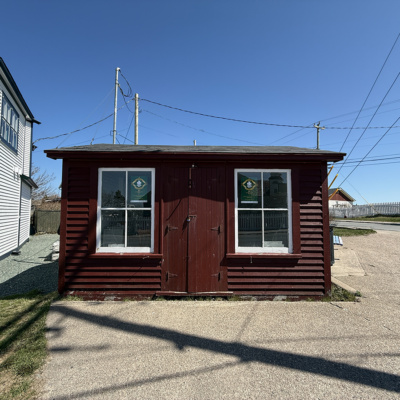
| 7 |
Generator Shack, Bonavista |
|
Hours |
Accessibility |
Intersection of Church Street and Coster Street W.
Known as the “Generator Shack,” this building originally provided electricity to the nearby Garrick Theatre starting in the 1950s. When restoration work began on the theatre in the late 1990s, the Shack was moved it to its current location on Church Street, where it has served as various purposes including retail and visitor information through the years.
| 8 |
Landfall Municipal Park, Bonavista |
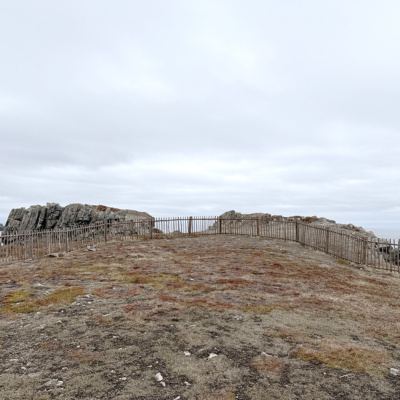
| 8 |
Landfall Municipal Park, Bonavista |
|
Hours |
Accessibility This site can be partially viewed from the road, but is best accessed on foot. Park in the lot and follow signage |
Cape Shore Road
This Municipal Park offers a dry campsite, pavilion shelter, and dramatic ocean views along Cape Shore Trail. Walking distance to Cape Bonavista Lighthouse Provincial Historic Site.
| 9 |
Calvin Hayley Event Centre, Elliston |
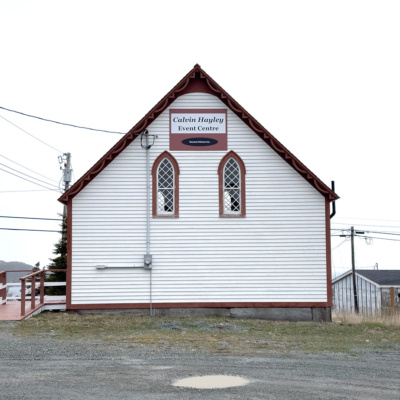
| 9 |
Calvin Hayley Event Centre, Elliston |
|
Hours |
Accessibility Wheelchair accessible by ramp; Wheelchair accessible washroom. |
5862 Main St, Elliston
Constructed in 1901-02 as the Salvation Army Citadel in Elliston, this building incorporates elements of the Gothic Revival style of architecture. It was designated as a Registered Heritage Structure in 2016. As of 2023, the building has been newly restored as the Calvin Hayley Event Centre by Tourism Elliston, to function as a space for community gatherings and events.
The original Citadel was connected to the development of The Salvation Army’s presence in Newfoundland and Labrador. The Elliston (then known as Bird Island Cove) corps was established in 1887 and the first officer was assigned to the community in 1889. By 1901, when the Citadel was built by Captain W. Reader, membership reached a high of just over 60 people. For generations, the Citadel hosted regular services and social events such as weddings, garden parties, and suppers.
| 10 |
South Bird Island picnic platform, Maberly |
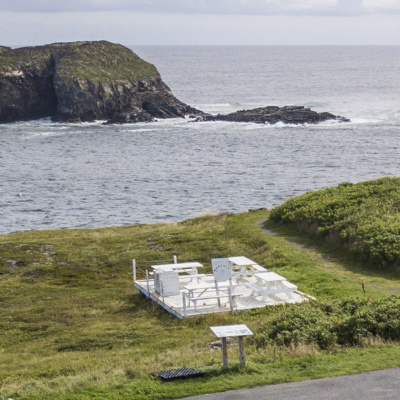
| 10 |
South Bird Island picnic platform, Maberly |
|
Hours |
Accessibility Visible from paved parking lot, best viewed on foot from grass. |
Maberly Road, Maberly
This platform looks out to South Bird Island, home to hundreds of seabirds. Formerly known as “Maberly Provincial Park,” the site includes a root cellar and demonstration traditional gardens.
| 11 |
The Factory, Port Union |
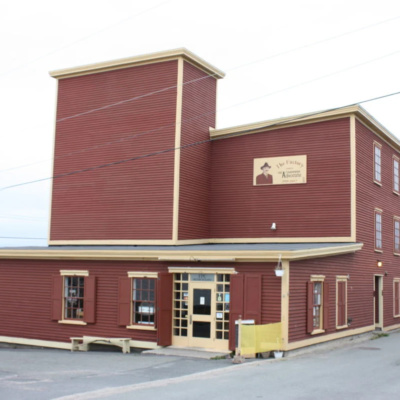
| 11 |
The Factory, Port Union |
|
Hours |
Accessibility Public washroom available. |
67 Main Road, Port Union
Note: The Biennale exhibition is installed in an area on Level 1. Request free access and directions to the exhibition at the front desk.
Port Union is known as the “Only Union Built Town” in North America. Built in 1923, The Factory was home to “The Fishermen’s Advocate” newspaper, which ran from 1910 to 1980, and was published in the interest of the Fishermen’s Protective Union of Newfoundland.
Today, The Factory serves as a museum and interpretive centre, chronicling Sir William Ford Coaker’s formation of the Fishermen’s Protective Union (FPU) in 1908, and archival items relating to the history of Port Union. The FPU Factory/Advocate Building was designated a Registered Heritage Structure by the Heritage Foundation of Newfoundland and Labrador in 2002.
| 12 |
Union House Arts, Port Union |
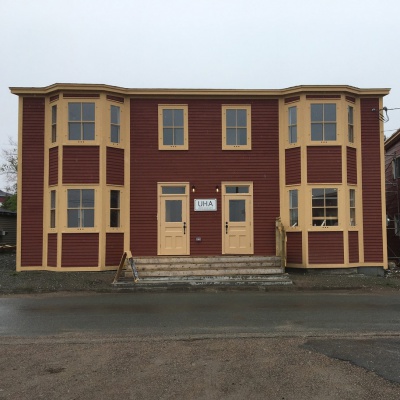
| 12 |
Union House Arts, Port Union |
|
Hours |
Accessibility Public washroom available. |
74 Main Rd, Port Union
Union House Arts (UHA) is a community artspace in Port Union. UHA supports new work by artists and craftspeople through residencies, exhibitions, and other arts-based programming. UHA is home to an art gallery, community kitchen, workshop space, studios, and artist accommodations. The UHA building, a historic Fishermen’s Protective Union rowhouse duplex, received the regional This Place Matters prize in 2017 from The National Trust for Canada, and officially opened its doors in 2019.
| 13 |
The Women’s Institute Craft Shop, Port Union |
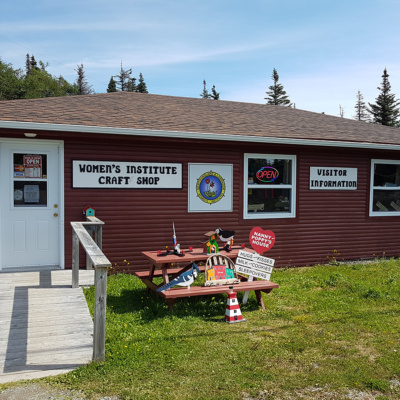
| 13 |
The Women’s Institute Craft Shop, Port Union |
|
Hours |
Accessibility Public washroom available. |
100 Discovery Trail, Port Union
The Women’s Institute (WI) is a local, provincial, national and international organization that promotes women, families and communities. The first WI was established on Feb. 19, 1897, in Stoney Creek, Ontario by Adelaide Hoodless. From here the organization spread across Canada and around the world. The Newfoundland & Labrador Women’s Institute began over 80 years ago with the formation of a Service League to help victims of the 1929 Tidal wave disaster. The Port Union-Catalina-Little Catalina branch on the Bonavista Peninsula formed in 1967, and there are currently ~30 active members. In addition to volunteer projects in the community and province, since the 1990s, the branch has run craft shop/visitor information selling pieces made by local WI members, and their families.
| 14 |
Two Whales Café, Port Rexton |
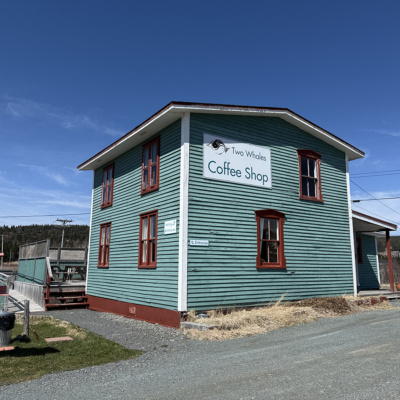
| 14 |
Two Whales Café, Port Rexton |
|
Hours |
Accessibility Public washroom available. |
99 Main Road, Port Rexton
Note: Biennale exhibitions are installed in two locations at this site. Indoors, works are installed on the walls of the café dining room. Outdoors, works are installed inside the four picnic pods across the driveway from the Café.
Two Whales Cafe is a small, independent coffee shop and restaurant overlooking Robin Hood Bay in the small township of Port Rexton. First opened in 2008, the café serves vegetarian and vegan food made with organic and/or locally sourced ingredients.
| 16 |
Fishermen’s Protective Union Store, Port Rexton |
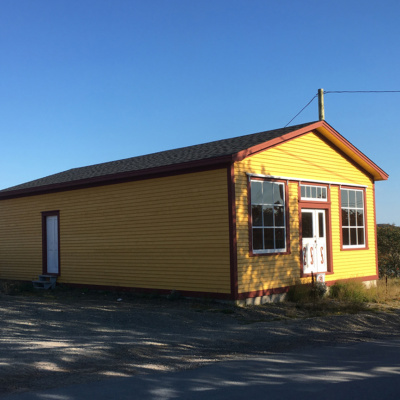
| 16 |
Fishermen’s Protective Union Store, Port Rexton |
|
Hours |
Accessibility Entering this space requires walking up a small set of stairs. |
Ship’s Cove Road, Port Rexton (across the road from Port Rexton Brewery)
The political arm of the Fishermen’s Protective Union was Newfoundland and Labrador’s first class-based political party. Founded by William Coaker in 1908, the FPU attempted to provide fishermen with a greater share of the wealth that their labour produced. The Union itself was a democratic organization, with branches in local towns electing local executives, which then chose regional delegates to the governing body, which in turn elected the executive officers. By 1914, the Union boasted more than 21,000 members in 206 councils, over half of Newfoundland’s fishers.
| 17 |
Lester Garland House, Trinity |
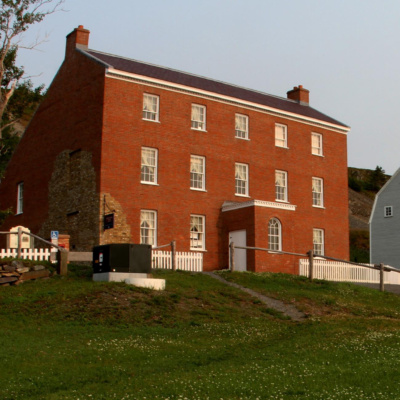
| 17 |
Lester Garland House, Trinity |
|
Hours |
Accessibility Exhibition space is upstairs (chairlift available); public washroom available. |
40 West St. , Trinity
Lester-Garland House sits on the site of the first brick house in Newfoundland, built in the 1760s. The building was taken down 200 years later despite preservation efforts by the Trinity Historical Society. Meticulously reconstructed in 1996-1997 using detailed measurements and photographs, the current building is a precise reproduction of the original Lester-Garland House, and serves as a museum, education centre and home to the Trinity Historical Society Archives. The house includes artifacts from the Lester and Garland families, providing visitors with a glimpse into the foundational days of Trinity and its strong historical and cultural links to the west of England.
| 18 |
Hiscock House, Trinity |
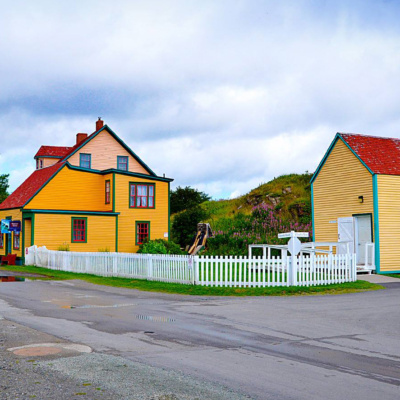
| 18 |
Hiscock House, Trinity |
|
Hours |
Accessibility Public washroom available (located in outbuilding on the property). |
Church Road, Trinity
This house was built in 1881, for Richard Hiscock and his future wife, Emma. It remained in the Hiscock family until 1978, when the Province of Newfoundland and Labrador purchased to function as a historic site. With many original artifacts, the house tells the story of a nineteenth- and twentieth-century merchant family. The museum highlights the story of Emma Hiscock, who became widowed not long after her marriage. With determination and resourcefulness, Emma operated a post office and a bank from the property, enabling her to independently support and educate her family of six children.
| A |
The Matthews House, Duntara |
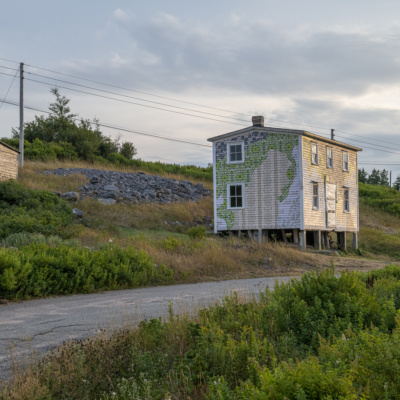
| A |
The Matthews House, Duntara |
|
Hours |
Accessibility Outdoor site. Visible from the roadside. |
|
Artists
|
|
This house is one of the original houses on Pond Lane. The Matthews family, the last to occupy it, was relocated to St. John’s in 1968 after the father died in an industrial accident in Labrador, leaving the mother and four young children behind. The house has stood vacant for more than 40 years, and fallen into disrepair. It was recently bought by Reinhard Reitzenstein and Gayle Young, Ontario-based artists (who were both in the 2017 Bonavista Biennale). They plan to restore the house to use as a seasonal home (read more about works still on view).
| B |
Knights Cove Beach |

| B |
Knights Cove Beach |
|
Hours |
Accessibility Outdoor site. Visible from the roadside. |
|
Artists
|
|
Knights Cove is a small community about 20 kilometers southwest of the town of Bonavista on Blackhead Bay, probably first settled in the 1790s or early 1800s. The beach at Knights Cove has a geological feature of coves and sheltered areas along coastal areas known as a “barachois” (sometimes pronounced “barrasway” in Newfoundland). A barachois is a coastal lagoon that is separated from the ocean by a sandbar. Sometimes the sandbar is used as a causeway, and might also house small fishery buildings. The barachois at Knights Cove can be easily seen from the road. (read more about works still on view).
| C |
Dr. Hilda Tremblett Wellness Centre, Bonavista |
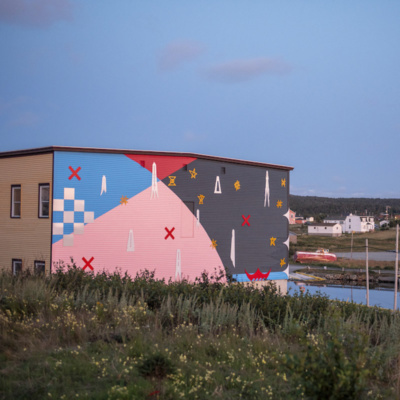
| C |
Dr. Hilda Tremblett Wellness Centre, Bonavista |
|
Hours |
Accessibility Outdoor site. Visible from the roadside. |
|
Artists
|
|
The Dr. Hilda Tremblett Wellness Centre, opened to the community in 2022, occupies the former Bonavista Central High School, built in the early 1950’s (read more about works still on view).
| D |
Port Rexton Brewery, Port Rexton |
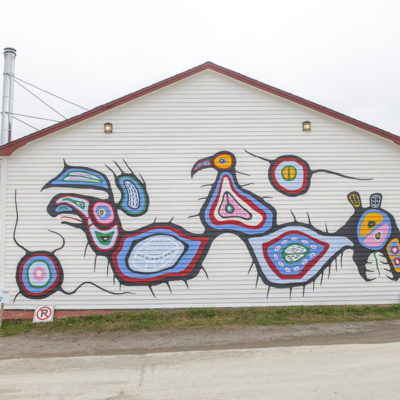
| D |
Port Rexton Brewery, Port Rexton |
|
Hours |
Accessibility Outdoor site. Visible from the roadside. |
|
Artists
|
|
Port Rexton Brewery is a craft brewery located in a renovated former school house. The site includes a taproom, patio and beer garden. (read more about works still on view).